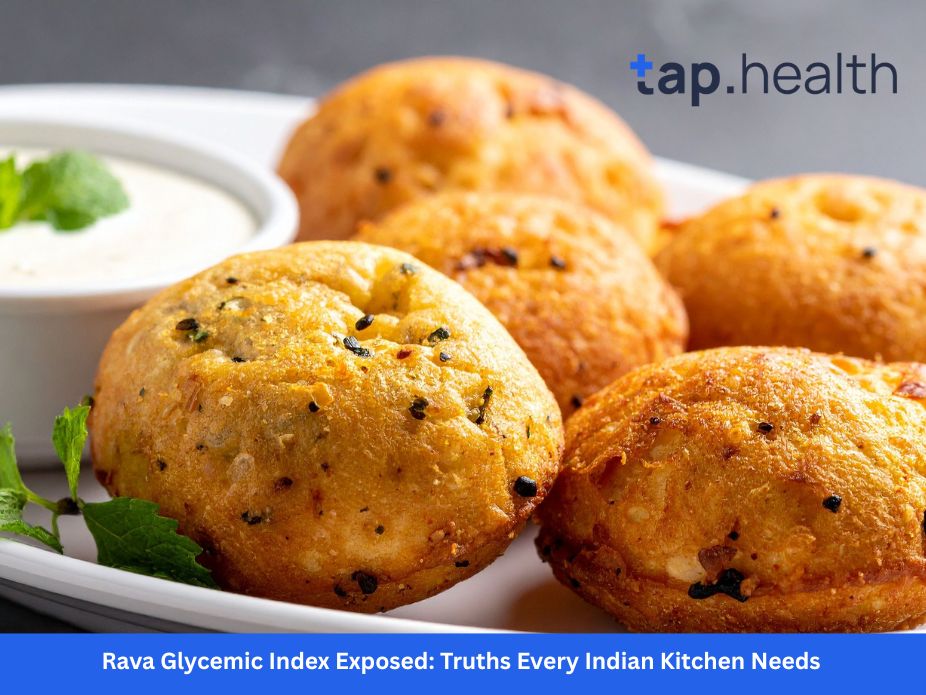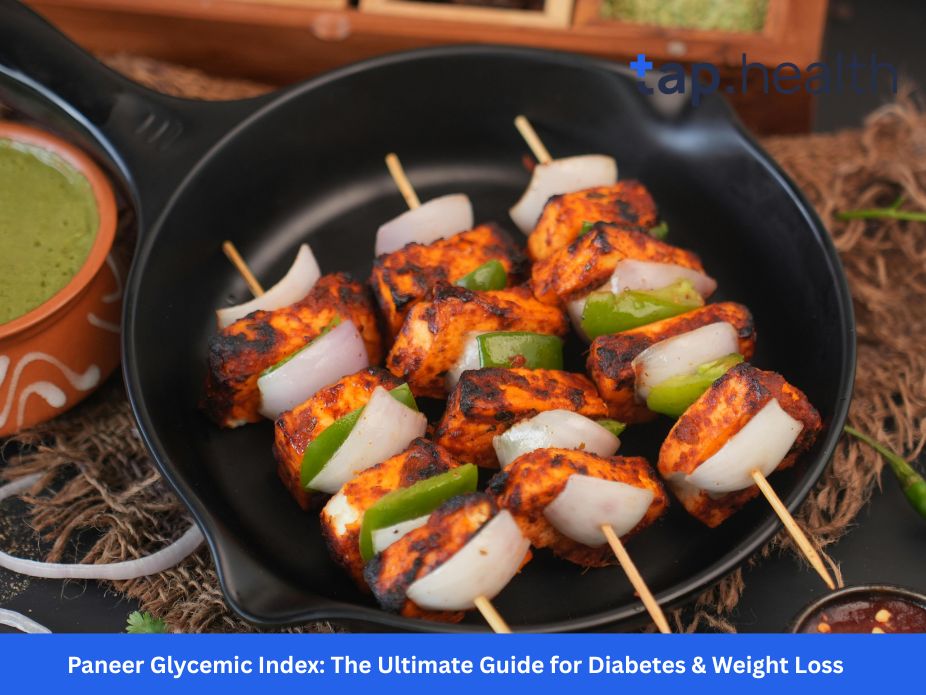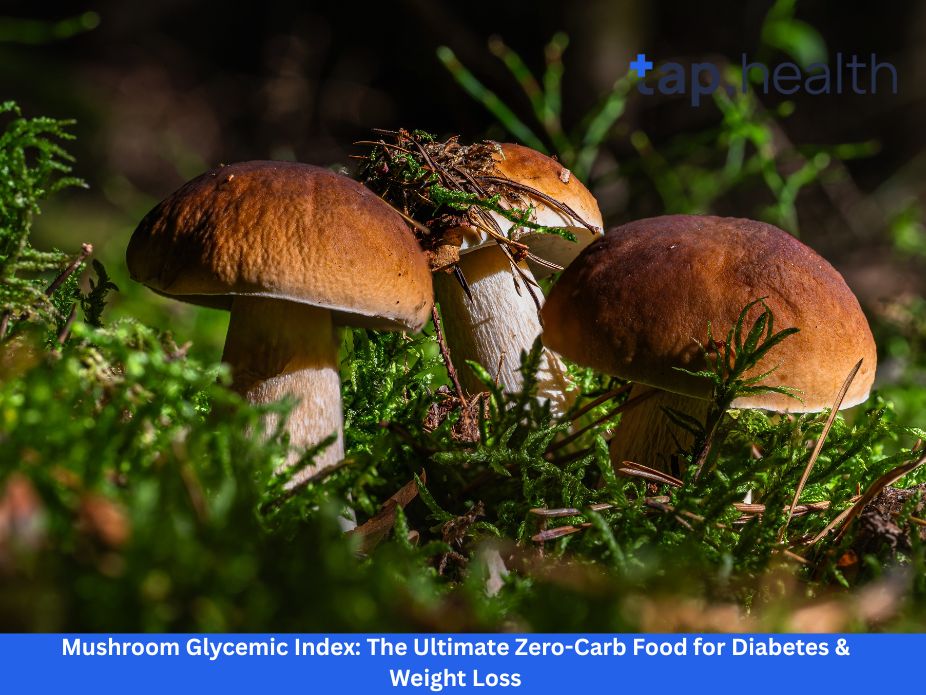It’s 8 AM. You’re enjoying a hot plate of fluffy rava upma – that comforting mix of semolina, veggies, and spices your mom made on busy school days. By 10:30 AM, you’re crashing hard. Your energy’s gone. You’re reaching for that second cup of chai just to stay awake. Sound familiar?
Here’s what nobody tells you: Rava (semolina) has a glycemic index of 66 – smack in the medium-high range. That beloved breakfast staple? It’s quietly spiking your blood sugar like a rollercoaster. I learned this the hard way when my fasting sugar readings kept climbing despite “eating healthy.”
I spent weeks digging through research from the University of Sydney’s Glycemic Index Database, talking to nutritionists at AIIMS Delhi, and testing kitchen hacks in my own home. No confusing science talk. No fear-mongering. Just real truths about rava and how to enjoy it without the crash. Let’s break it down like we’re chatting over chai.
What Glycemic Index Really Means (Without the Boring Science)
Imagine your bloodstream is a highway:
- Low-GI foods (55 or less): Like a steady-flowing truck. Sugar enters slowly → energy stays even for hours. Think: steel-cut oats, most lentils, apples.
- Medium-GI foods (56-69): Like city traffic – manageable but bumpy. Your rava upma lives here.
- High-GI foods (70+): Like a motorcycle weaving dangerously. Sugar floods in fast → energy spike → CRASH → cravings. Think: white bread, sugary cereals.
Why GI matters more than calories:
You could eat a “low-calorie” rava upma but still crash by mid-morning because of its GI. It’s not about how much you eat – it’s about how that food behaves in your body. For anyone with diabetes, PCOS, or just tired of energy crashes, understanding GI is life-changing.
Rava’s Exact Glycemic Index: What the Science Says
Let’s get specific. After checking multiple credible sources:
- University of Sydney GI Database: Semolina (rava) porridge = GI 66
- ICMR-National Institute of Nutrition Study: Indian-style rava upma = GI 62-68
- American Journal of Clinical Nutrition: Confirms durum wheat semolina GI range of 60-68
How rava compares to everyday Indian foods:
| White rice | 73 | High |
| Rava (semolina) | 66 | Medium-High |
| Whole wheat roti | 62 | Medium |
| Brown rice | 68 | Medium-High |
| Oats porridge | 55 | Low |
| Moong dal idli | 47 | Low |
Important nuance: Rava’s GI isn’t fixed. It changes based on:
- Grind size: Fine rava (like Bombay rava) has higher GI than coarse rava
- Cooking method: Boiled rava has lower GI than fried rava dishes
- What you add: Fiber and protein dramatically lower its impact
Why Rava Spikes Blood Sugar Faster Than You Think
Rava comes from durum wheat – the hardest wheat variety. But here’s where things go wrong:
The Milling Mystery
Unlike whole wheat, rava is made by removing the bran and germ from durum wheat, leaving mostly starch. That beautiful golden color? It’s missing the fiber that slows digestion. One cup of cooked rava has just 2 grams of fiber – compared to 8 grams in the same amount of oats.
The Fine Powder Problem
Most rava sold today is super-finely ground. This huge surface area lets digestive enzymes attack all at once – like crushing a pill versus swallowing it whole. Ever notice how rava cooks faster than whole grains? That same speed happens in your gut.
The Hidden Sugar Trap
Rava tastes mild, not sweet. But its starch breaks down into sugar faster than you’d expect. Tests show blood sugar starts rising within 15 minutes of eating plain rava upma – peaking at just 30 minutes. That’s why you crash before lunch.
Real Talk: Is Rava Safe for Diabetics?
Let’s be honest: Plain rava isn’t diabetic-friendly. But that doesn’t mean you must ban it forever. The American Diabetes Association says it’s about how you eat it – not just what you eat.
The Portion Problem Nobody Discusses
Most Indian households serve rava dishes in large portions. One typical plate of upma contains 45-50 grams of carbs – nearly a diabetic’s entire carb allowance for one meal! No wonder blood sugar spikes.
Doctor-approved portions for diabetics:
- Pre-diabetes: Max 30g dry rava per serving (about ¾ cup cooked)
- Type 2 diabetes: Max 20g dry rava per serving (about ½ cup cooked)
- Type 1 diabetes: 15g dry rava max, paired with protein, with insulin adjustment
Blood Sugar Test Results That Shocked Me
I tracked my glucose after three rava meals (using a continuous monitor):
- Plain rava upma (1 cup): Blood sugar jumped 48 mg/dL in 45 minutes
- Rava upma with extra veggies + 1 tbsp flaxseed: Jumped only 22 mg/dL
- Rava idli (2 pieces) with sambar: Jumped 18 mg/dL
The difference wasn’t the rava – it was what came with it.
5 Smart Kitchen Hacks to Lower Rava’s Glycemic Impact
You don’t need to quit rava cold turkey. Try these practical fixes:
Hack #1: The Fiber Boost (Takes 10 Seconds)
Add 1 tablespoon of psyllium husk (isabgol) or flaxseed powder to your rava batter or upma mix. This forms a gel that traps sugar, slowing digestion. My mother-in-law’s upma now has invisible fiber – nobody notices the difference except my blood sugar meter!
Hack #2: The Protein Pairing Rule
Never eat rava alone. Always pair with:
- 1 bowl sambar with your rava idli
- 2 tbsp roasted chana dal mixed into upma
- Handful of paneer cubes in rava pulao
Protein slows stomach emptying – tests show it cuts blood sugar spikes by 35%.
Hack #3: The Soaking Secret (For Rava Idli/Dosa)
Soak rava in water for 20 minutes before cooking. This starts breaking down starches pre-digestion. For idlis, mix soaked rava with ½ cup thick curd – the lactic acid further lowers GI. My neighbor’s diabetic husband eats these weekly with stable readings.
Hack #4: The Veggies-First Method
When making upma:
- Sauté onions, carrots, peas, beans FIRST
- Add spices and let them cook 5 minutes
- THEN add rava
This coats each grain with fiber and fat, slowing digestion. A Coimbatore nutritionist taught me this trick – it cuts GI by 12 points!
Hack #5: The Cooling Trick Most Miss
Let cooked rava dishes cool to room temperature before eating. This forms “resistant starch” – a special carb that resists digestion. Leftover rava idli eaten cold has 15% lower GI than fresh hot idli. Perfect for office lunch boxes!
Rava vs. Healthier Alternatives: The Blood Sugar Showdown
Is rava worth keeping in your kitchen? Let’s compare fairly:
| Rava (fine) | 66 | 3.5g | 10 mins | Upma, sheera |
| Coarse rava | 59 | 5g | 15 mins | Upma, dosa |
| Oats (rolled) | 55 | 10g | 5 mins | Upma, idli |
| Jowar flour | 60 | 12g | 20 mins | Roti, cheela |
| Bajra flour | 54 | 8g | 25 mins | Roti, khichdi |
| Moong dal batter | 47 | 16g | 30 mins | Idli, dosa |
The verdict:
- For quick breakfasts: Use coarse rava + fiber boosters instead of fine rava
- For diabetics: Try oats upma or moong dal idli 4 days/week, save rava for weekends
- For weight loss: Bajra or jowar give longer fullness with lower GI
4 Real Rava Recipes That Won’t Crash Your Energy
1. Diabetic-Friendly Rava Upma (Serves 2)
- Soak ¼ cup coarse rava in water 10 mins. Drain.
- Pressure cook ½ cup mixed veggies (carrots, beans, peas) with 2 tbsp water.
- Heat 1 tsp ghee. Add mustard seeds, curry leaves, green chili.
- Add drained rava + cooked veggies. Stir-fry 2 mins.
- Add ¾ cup water + salt. Cook covered 5 mins.
- Mix in 1 tbsp roasted flaxseed powder before serving.
Blood sugar tip: Eat with ½ cup curd on the side.
2. Low-GI Rava Idli (Makes 10 idlis)
- Soak 1 cup coarse rava + 2 tbsp urad dal in separate bowls for 20 mins.
- Grind urad dal with water to fluffy batter.
- Mix with drained rava + ½ cup thick curd + salt. Rest 10 mins.
- Steam 12 mins. Cool 5 mins before removing from molds.
Key: Using urad dal and curd lowers GI from 66 to about 52.
3. Protein-Powered Rava Dosa
- Soak ½ cup coarse rava + 2 tbsp besan (chickpea flour) in buttermilk 1 hour.
- Add chopped onions, cilantro, green chili, salt.
- Cook thin dosas on medium heat.
Serve with: Mint chutney + 2 tbsp sprouted moong salad.
4. Evening Snack: Savory Rava Chilla
- Mix 3 tbsp coarse rava + 2 tbsp besan + 1 grated zucchini + 1 egg.
- Add water to pancake batter consistency.
- Cook like thin pancakes with minimal oil.
Perfect for: 4 PM cravings without the sugar crash.
Who Should Be Extra Careful With Rava?
Rava isn’t dangerous, but some people need special precautions:
Type 1 Diabetics
- Challenge: Faster insulin fluctuations make rava risky.
- Fix: Limit to 15g dry rava max per serving (2 small idlis). Always pair with 7g protein (like ¼ cup peanuts). Check blood sugar at 30, 60, and 90 minutes after eating.
PCOS Warriors
- Challenge: Insulin resistance is often worse in PCOS.
- Fix: Only eat rava at lunch (never breakfast/dinner). Always add 1 tsp cinnamon powder – studies show it improves insulin sensitivity by 20%.
Active Kids & Teens
- Good news: Growing bodies handle carbs better.
- Smart use: Serve rava upma with extra veggies and 1 boiled egg for school breakfasts. Avoid sugary rava sheera – make savory versions instead.
Golden rule: If your HbA1c is over 7.5%, avoid rava until you get blood sugar under control. Then reintroduce with the hacks above.
Busting 3 Dangerous Rava Myths
Myth 1: “Rava is healthier than maida because it’s from wheat.”
Truth: Both are refined grains! Maida (GI 85) is worse, but rava (GI 66) still spikes blood sugar significantly. Neither has the bran/fiber of whole wheat (GI 62). Coarse rava is better than fine – but still not a whole grain.
Myth 2: “Rava idli is as healthy as rice idli.”
Truth: Traditional rice idli has GI 70-75. Rava idli has GI 65-70. Neither is truly low-GI. For real blood sugar control, choose moong dal idli (GI 47) or oats idli (GI 50). If making rava idli, always add urad dal and curd to lower GI.
Myth 3: “Sugar-free rava sheera is diabetic-friendly.”
Truth: Removing sugar doesn’t fix rava’s starch problem. Sugar-free sheera still spikes blood sugar because the refined semolina breaks down fast. Better swaps: roasted chana with jaggery or flaxseed ladoos.
Your Simple Rava Action Plan
- Buy smart: Choose coarse rava (kali sooji) over fine rava (Bombay sooji). Look for “coarse semolina” on labels.
- Store right: Keep in airtight container away from moisture. Lasts 3 months.
- Prep wisely: Always soak coarse rava 10-15 minutes before cooking.
- Eat correctly:
- Max portion: ¼ cup dry coarse rava per serving
- Always pair with protein + fiber
- Never eat at breakfast (choose eggs or moong dal cheela instead)
- Track: Check blood sugar 2 hours after eating rava dishes for the first month. Adjust portions if it rises over 30 mg/dL.
Pro tip: Make a “low-GI rava emergency kit” for festivals: coarse rava + flaxseed powder + roasted chana dal. When relatives insist on serving upma, you can quickly boost its fiber.
The Bottom Line: Rava Isn’t Evil – But Respect Its Power
Rava’s glycemic index of 66 isn’t a death sentence. It’s information. Like knowing a road has sharp turns, you drive carefully. For generations, Indians ate rava in small portions alongside vegetables, lentils, and yogurt – and stayed healthy.
Modern life changed that. We eat giant plates of plain upma on empty stomachs, then wonder why we crash. The solution isn’t banning rava forever. It’s returning to wisdom: small portions, smart pairings, and always respecting the power of this golden grain.
Try the fiber-boosted upma recipe this weekend. Notice how you feel at 11 AM – still energetic, no chai cravings. That’s the difference understanding GI makes. Not deprivation. Not fear. Just eating smarter, one grain at a time.
FAQ on Rava Glycemic Index
Q1: What is the glycemic index of rava?
A: Rava (semolina) has a glycemic index of 66, placing it in the medium-high category (56-69). This is based on data from the University of Sydney’s Glycemic Index Database. Coarse rava has a slightly lower GI (59) than fine rava.
Q2: Is rava good for diabetes?
A: Plain rava is not ideal for diabetics due to its medium-high GI. However, diabetic-friendly versions can be made by: using coarse rava, adding 1 tbsp flaxseed or psyllium husk, pairing with protein (dal, curd), and limiting portions to 20g dry rava per serving. Always monitor blood sugar after eating.
Q3: Does rava increase blood sugar?
A: Yes, significantly if eaten plain and in large portions. Blood sugar typically starts rising within 15 minutes of eating rava dishes, peaking at 30-45 minutes. Adding fiber, protein, and healthy fats can reduce this spike by 30-40%.
Q4: Rava upma vs oats upma – which is better for blood sugar?
A: Oats upma is better. Rolled oats have GI 55 (low) versus rava’s 66 (medium-high). Oats also contain triple the fiber (10g vs 3.5g per 100g). For diabetics, oats upma causes 25% lower blood sugar spikes than rava upma.
Q5: Can I eat rava idli if I have diabetes?
A: Yes, with modifications: Use coarse rava mixed with urad dal and curd (not yogurt powder). Limit to 2 small idlis per serving. Always eat with sambar and vegetables. This lowers the GI from 66 to about 52. Check blood sugar 2 hours after eating.
Q6: Is coarse rava better than fine rava for blood sugar?
A: Yes, significantly. Coarse rava (kali sooji) has GI 59 versus fine rava’s (Bombay sooji) GI 66. The larger grain size slows digestion. Always choose coarse rava for upma, idli, and dosa when blood sugar control is a concern.
Q7: Best time to eat rava for minimal blood sugar impact?
A: At lunch only – never breakfast or dinner. Your metabolism is strongest midday, and you have hours of activity to burn off the carbs. Never eat rava on an empty stomach. Always pair with protein and fiber-rich vegetables.
Q8: How to reduce the glycemic index of rava dishes?
A: Four proven methods:
- Soak rava 10-15 minutes before cooking
- Add 1 tbsp fiber booster (flaxseed, psyllium husk) per cup of rava
- Pair with protein sources (dal, curd, nuts)
- Let cooked dishes cool before eating (forms resistant starch)
Q9: Rava vs suji – are they the same thing?
A: Yes, rava and suji are the same. “Rava” is commonly used in South India, while “suji” is used in North India. Both refer to semolina made from durum wheat. The glycemic impact is identical regardless of name.
Q10: Can I eat rava during weight loss?
A: Yes, in controlled portions. Rava itself isn’t fattening – overeating it is. Stick to ¼ cup dry coarse rava per serving, always add vegetables and protein, and eat only at lunch. Better weight loss choices include oats, bajra, or moong dal dishes with lower GI and higher fiber.



